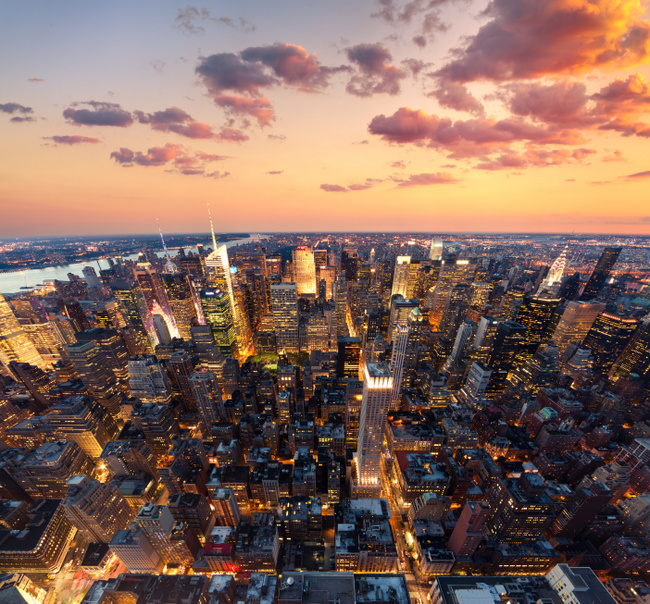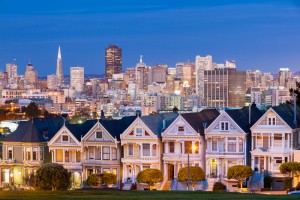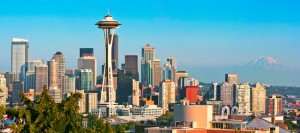By Anca Gagiuc on July 17, 2015 in News
The number of people living in urban areas is increasing at a rapid pace. Currently, about 54 percent of the world’s population live in cities and use about two-thirds of the world’s energy and the majority of other resources. By 2025, 34 cities worldwide will have a population of greater than 10 million people, and according to the United Nations, about 6.3 billion people, or 66 percent of the world’s population, will have moved into a city by 2050.
The increased urbanization comes with a set of challenges that affect not only the current residents, but also future ones and the planning needs to address how cities can grow to accommodate them, in a sustainable and cost-effective manner. The demand for resources handled by the municipality will reach extreme heights; the demand for water alone is estimated to reach by 2025 80 billion additional metric tons and this is not the only reason of concern: reliable power and energy, air quality, traffic flows – all will impact quality of life.
With these in mind, more and more metro areas are getting smarter by using technology. According to a study by IHS Technology, by 2015 the world will have at least 88 smart cities, out of which 25 will be in the United States. The report “Smart Cities: Business Models, Technologies and Existing Projects” defines the ‘smart cities’ as those that have “deployed – or are piloting – the integration of information, communications, and technology (ICT) solutions across three or more functional areas of the city.” Applications include mobile and transport, energy and sustainability, physical infrastructure, governance, and safety and security.
Europe and Asia lead the way in implementation of smart cities, however, the U.S. is making efforts to bring smarter and more efficient city infrastructures and planning to its urban landscapes.
New York City
One of the world’s most densely populated cities, NYC has been in the first line of adopters of smart city technologies for several years. It has seen initiatives like City 24/7 – an interactive platform that information from open government programs, local businesses, and citizens to provide meaningful and powerful knowledge anytime, anywhere, on any device. It has thought of distressed times and implemented Street Charge – a project that adds solar-powered charging stations in parks, on beaches, and other public outdoor spaces to support its citizens stay connected through their mobile devices, regardless of manufacturer and carrier. Green Loop and Plus Pool Project try to fix the trash issue, as well as to clean the river waters while offering New Yorkers a place to swim.
The latest and the greatest initiative (so far), designed with millennials in mind, is the Hudson Yards project – the largest real estate development in the history of the United State that will spread over 28 acres and encompass over 17 million square feet of commercial and residential space. This “Quantified Community”, is the vision of New York University’s Center for Urban Science and Progress (CUSP) in partnership with Related Companies and Oxford Properties Group. Their mission is to build a community that will be digitally tracked and analyzed by measuring environmental and lifestyle factors such as traffic, air quality, and energy consumption. Furthermore, it will include a new trash-disposal system that uses pneumatic tubes.
Boston
The Boston Department of Innovation and Technology has collaborated in creating five free apps designed to help the citizens report neighborhood problems to the government and find on-street parking in the Innovation District. Moreover, the city displays message signs telling the Time to Destination provided by All Traffic Solutions, while Smart Parking Sensors help better manage the traffic. Furthermore, Boston uses smart city technology to help more children walk to school, and to collect data from its Hubway city bike rental system to lighten road congestion.
One of the most recent investments the city has made to improve the life of its citizens is Soofa, solar powered benches which besides charging devices, monitor air quality and sound levels.
San Jose
In partnership with Intel, the California city takes one step forward their vision of its ‘Green City’ and added sensors that monitor air quality, noise pollution, and traffic flow. Through this program, and Intel’s first smart city implementation, San Jose aims towards economic growth, job creation – 25,000 clean-tech jobs – the creation of environmental sustainability, and better quality life for its residents. The collected data will be used to raise awareness among the residents and help them make more informed personal decisions about the steps all should take, such as encourage them to use public transportation or bicycles to improve air quality.
San Francisco
Having a reputation for being technologically innovative with Silicon Valley nearby, the city is glob al leader in smart-city projects. One of its main roads downtown, Market Street offers three miles of free Wi-Fi. At the top of the interest pyramid though are green and sustainability initiatives. Currently, the residents separate the trash in three categories: recycling, compost, and landfill waste. San Francisco’s inhabitants are provided with over 100 charging stations in different locations in an attempt to promote the use of hybrid and electric cars, targeting at reducing pollution and greenhouse emissions.
al leader in smart-city projects. One of its main roads downtown, Market Street offers three miles of free Wi-Fi. At the top of the interest pyramid though are green and sustainability initiatives. Currently, the residents separate the trash in three categories: recycling, compost, and landfill waste. San Francisco’s inhabitants are provided with over 100 charging stations in different locations in an attempt to promote the use of hybrid and electric cars, targeting at reducing pollution and greenhouse emissions.
Seattle
 Seattle is another big metropolitan area with great interest in green initiatives, the city offers substantial tax breaks to both businesses and residents who implement friendly technology. More so, the city supports residents who qualify to configure their homes into becoming more energy efficient.
Seattle is another big metropolitan area with great interest in green initiatives, the city offers substantial tax breaks to both businesses and residents who implement friendly technology. More so, the city supports residents who qualify to configure their homes into becoming more energy efficient.
Seattle attracts organizations aiming to revolutionize the lifestyle of the residents; Sustainable Seattle is one of them, focused on creating more sustainable development. Additionally, in partnership with Microsoft, Seattle launched the High-Performance Buildings Pilot Project which uses software and the cloud to fine tune building performance in real time. The project generates an energy savings of 15 to 25 percent without paying for costly retrofits or disrupting tenants.


